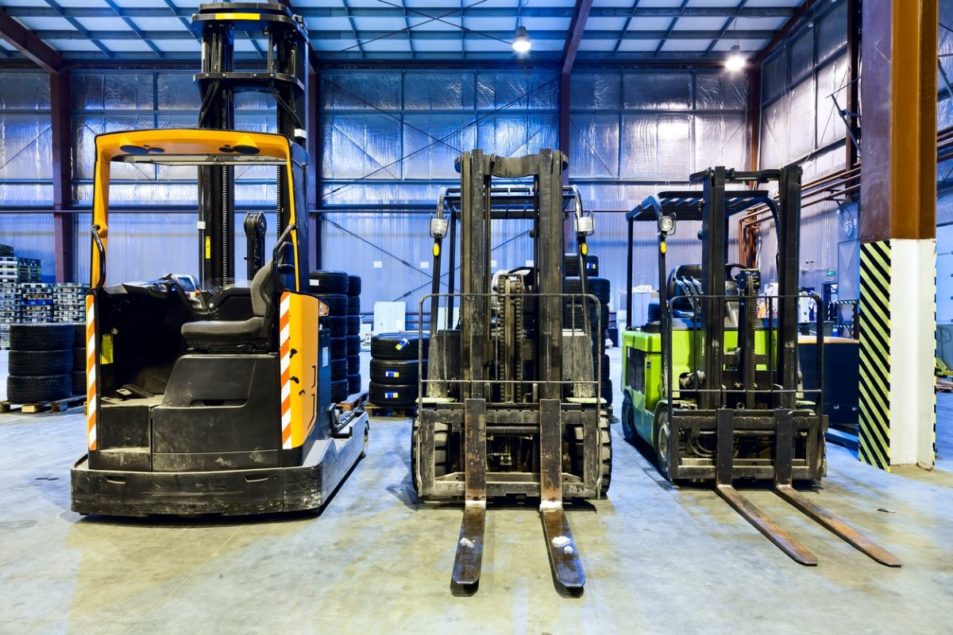
Most supply chain managers understandably prioritize productivity as a means to maintain or increase throughput and efficiency. However, for many, forklift batteries do not always factor into the productivity equation. Forklift batteries — whether they are lead acid or lithium-ion batteries — are one of the most vital factors that can determine how well your supply chain performs. When they fail, it can mean that not all your forklifts are available and operating to standards when you need them most.
Here are six tips for properly maintaining your forklift batteries to support battery performance, uptime and supply chain productivity.
Conduct a power study. The best way to gain insight into your batteries’ performance is to conduct a power study. A power study combines monitoring, data analytics, and expert insight to provide fleet managers with recommendations and best practices for enhancing forklift battery performance.
By working with a forklift provider to employ battery monitoring technology, real-time data can be gathered from a broad sampling of frequently used forklifts. This data will reveal how your fleet regularly consumes and replenishes power. Modeling that considers the applications, power usage and different charging scenarios can also help determine the best charging process, including the number and locations of charging stations. A power study can even help you determine whether introducing lithium-ion batteries is the right choice for your operation.
Track your batteries. Create an accurate inventory of your batteries to establish a baseline for future years. Annually document each battery’s condition and capacity level, and conduct tests to help determine battery health. Updating the list every year will allow you to maintain an accurate profile of your batteries, helping you better understand how your battery needs change, especially as your applications and equipment change.
Many forklift fleet management systems enable you to monitor the health of your batteries remotely. Using this monitoring technology, you can identify each battery’s remaining cycles and the life left. This information will help you create battery performance profiles that track performance throughout a given period or for a particular application to ensure optimal performance. Knowing the current health status of the batteries will also provide you with information vital to troubleshooting maintenance issues before they lead to premature battery failure.
Right-size your battery utilization. Right-sizing your battery utilization includes right-sizing your batteries not only to the needs of your fleet but also to the applications or functions that your forklifts perform. Understanding your fleet utilization and conducting a power study will help you determine the number of batteries you need. Moving forward, every right-sizing exercise you conduct with your fleet should include battery utilization information. Equipped with real-time, accurate battery performance data and the ability to track amp hours and hours of work (throughput), you can better understand your battery capabilities.
This means you can more accurately identify which charging method or schedule works best for each battery, and which batteries work best in certain trucks and applications. Targeting certain batteries for particular applications further enhances the efficiencies of battery rotation and ultimately supports better battery runtime. Right-sizing individual batteries for specific applications can be especially important if you are considering switching from lead-acid to lithium-ion batteries. Often, because of the opportunity charging utilized with lithium-ion batteries, a smaller capacity battery can be used.
Evolve your charging strategy. The data collected from your power study and monitoring technology will help you more accurately identify which charging method or charging frequency works best for your batteries and operation. Once you’ve made this decision, you can use additional information from the power study and monitoring technology to determine how many chargers you need to support your fleet, and where they should be placed in your facility to maintain or increase productivity.
One factor often overlooked is cable management, which has become critically important, regardless of the type of batteries and chargers being used. Connectors can be a primary failure point in the battery/charger system. Failure to properly route and support charging cables can accelerate wear, tear and breakage of connectors, which can lead to charging and power failures. Invest in cable management tools that secure the charging cables and connectors, keeping them off the floor and preventing cable damage and clutter.
If you are a lead-acid battery user, it is also important to consider whether you will need chargers that support lithium-ion technology in the future. There are chargers available on the market that can be configured to charge lithium-ion and lead-acid batteries.
Establish battery best practices. Establishing battery best practices involves adhering to standardized processes as you grow and add to your fleet. For instance, in conventional charging applications, implementing a first-in-first-out (FIFO) rotation is key. This will help you avoid common problems like frequent change-outs, as well as get your battery room in order and establish a process for charging batteries. It can be as simple as a log-in sheet or an established process to “always take the battery on the left.” There are also chargers and battery management systems available to help operators choose the right battery or know when they’ve made the wrong choice.
Consistent watering and equalize charging are two common best practices. Equalize charging raises the charge of the cells in the battery to equal voltage. Cells with different voltages cause certain cells to work harder and degrade faster, leading to the battery losing capacity over time. Equalize charging should occur once a week, with proper time given so the battery can cool down. There are smart chargers available that allow you to set a time and date for it to happen automatically. A possible best practice might be to equalize charges on Saturday, cool batteries on Sunday and water first thing Monday before the forklift is used.
Another common issue that should be addressed occurs when a battery’s cool-down period is too short. After you complete a full charge on a battery, it needs time to cool down before discharging begins. Increased battery temperature while discharging can transfer to cables and connectors, which can result in faster degradation or complete failure. Unless you are utilizing “opportunity” charging — short periods of charging through the day — lead-acid batteries ideally need eight hours to cool down before discharging.
Continually revisit your battery strategy. Finally, your battery strategy should never be static. It should evolve and change along with your operational needs and forklift fleet. You need to continually monitor and understand your fleet, and plan accordingly to ensure its current and future power requirements are met. Armed with this information, you can make informed decisions about the number and type of batteries you need, as well as possible enhancements to your charging infrastructure.
For many forklift fleet managers, batteries can be one of the most challenging components to manage and understand. However, recent advances in data analytics and monitoring technologies are providing new opportunities to strengthen battery management programs by removing the guesswork from the process, enabling you to take a holistic and strategic approach to battery performance amid efforts to increase productivity.
Trevor Bonifas is general manager motive power with Crown Equipment.
- SEO Powered Content & PR Distribution. Get Amplified Today.
- PlatoData.Network Vertical Generative Ai. Empower Yourself. Access Here.
- PlatoAiStream. Web3 Intelligence. Knowledge Amplified. Access Here.
- PlatoESG. Automotive / EVs, Carbon, CleanTech, Energy, Environment, Solar, Waste Management. Access Here.
- BlockOffsets. Modernizing Environmental Offset Ownership. Access Here.
- Source: https://www.supplychainbrain.com/blogs/1-think-tank/post/37623-balancing-power-and-productivity-forklift-power-tips-to-increase-uptime
- :has
- :is
- :not
- :where
- a
- ability
- About
- accelerate
- accordingly
- accurate
- accurately
- add
- Additional
- Additional Information
- advances
- After
- All
- allow
- along
- also
- always
- Amid
- amp
- an
- analytics
- and
- Annually
- Application
- applications
- approach
- ARE
- armed
- AS
- automatically
- available
- avoid
- balancing
- Baseline
- batteries
- battery
- BE
- because
- become
- before
- being
- BEST
- best practices
- Better
- broad
- but
- by
- cable
- cables
- CAN
- capabilities
- Capacity
- Cause
- Cells
- certain
- chain
- challenging
- change
- charge
- charges
- charging
- charging stations
- choice
- Choose
- clutter
- combines
- Common
- complete
- components
- condition
- Conduct
- conducting
- configured
- Consider
- considering
- considers
- continually
- contributor
- conventional
- Cool
- create
- Current
- cycles
- damage
- data
- Data Analytics
- Date
- day
- decision
- decisions
- Determine
- different
- do
- document
- down
- each
- efficiencies
- efficiency
- efforts
- enable
- enabling
- enhancements
- Enhances
- enhancing
- ensure
- equal
- equipment
- equipped
- especially
- establish
- established
- establishing
- Even
- Every
- evolve
- Exercise
- expert
- Facility
- factor
- factors
- FAIL
- Failure
- faster
- Finally
- First
- FLEET
- fleet management
- Floor
- For
- Forward
- Frequency
- frequent
- frequently
- from
- full
- functions
- further
- future
- Gain
- gathered
- General
- get
- given
- Grow
- happen
- harder
- Health
- help
- helping
- holistic
- HOURS
- How
- However
- http
- HTTPS
- ID
- ideally
- identify
- if
- implementing
- important
- in
- include
- includes
- Including
- Increase
- increased
- individual
- information
- informed
- Infrastructure
- insight
- instance
- into
- introducing
- inventory
- Invest
- issue
- issues
- IT
- ITS
- jpg
- keeping
- Key
- Know
- Knowing
- lead
- leading
- left
- Level
- Life
- like
- List
- locations
- losing
- made
- maintain
- maintaining
- maintenance
- make
- manage
- management
- Management Tools
- manager
- Managers
- many
- Market
- mean
- means
- met
- method
- might
- modeling
- Monday
- Monitor
- monitoring
- more
- most
- moving
- Need
- needs
- never
- New
- number
- occur
- of
- off
- often
- on
- once
- ONE
- only
- operating
- operation
- operational
- operators
- opportunities
- Opportunity
- optimal
- or
- order
- over
- particular
- perform
- performance
- performs
- period
- periods
- plan
- plato
- Plato Data Intelligence
- PlatoData
- Point
- possible
- power
- practice
- practices
- Premature
- preventing
- primary
- Prioritize
- problems
- process
- processes
- productivity
- Profile
- Profiles
- Programs
- proper
- properly
- provide
- provider
- providing
- raises
- real-time
- real-time data
- recent
- recommendations
- Regardless
- regularly
- remaining
- removing
- Requirements
- result
- reveal
- right
- Room
- Route
- saturday
- scb
- scenarios
- schedule
- secure
- set
- sheet
- Short
- should
- Simple
- SIX
- smaller
- smart
- So
- specific
- standards
- Stations
- Status
- Strategic
- strategic approach
- Strategy
- Strengthen
- Study
- supply
- supply chain
- support
- Supports
- system
- Systems
- Take
- targeting
- Technologies
- Technology
- tests
- that
- The
- The Future
- Them
- There.
- they
- thing
- this
- Through
- throughout
- throughput
- time
- tips
- to
- too
- tools
- track
- transfer
- Trucks
- two
- type
- Ultimately
- understand
- Understandably
- understanding
- updating
- uptime
- Usage
- use
- used
- User
- using
- utilized
- Utilizing
- vital
- Voltage
- Water
- watering
- Way..
- week
- WELL
- when
- whether
- which
- while
- will
- with
- Work
- working
- works
- Wrong
- year
- years
- you
- Your
- zephyrnet












